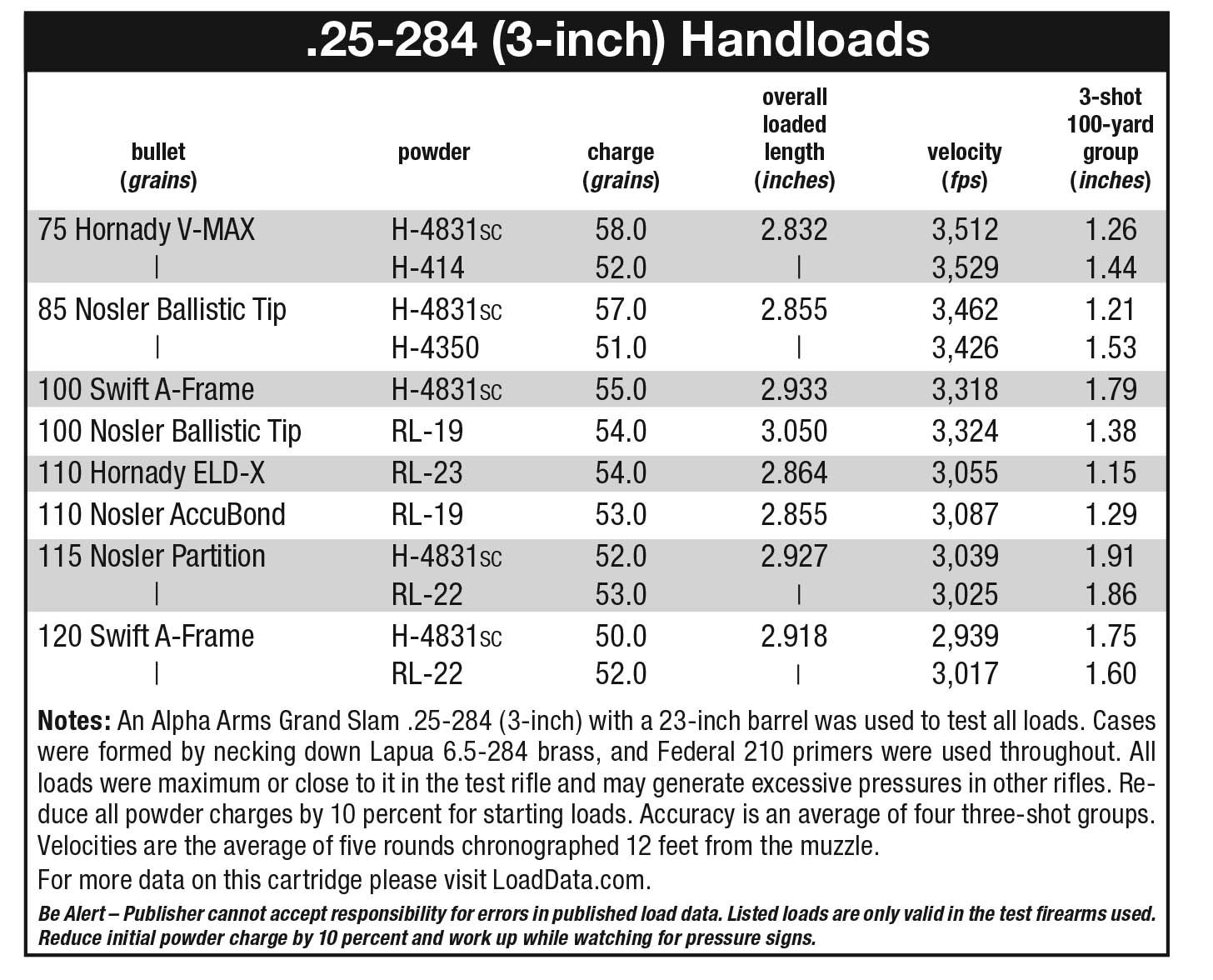Wildcat Cartridges
.25-284 (3-Inch)
column By: Layne Simpson | June, 19
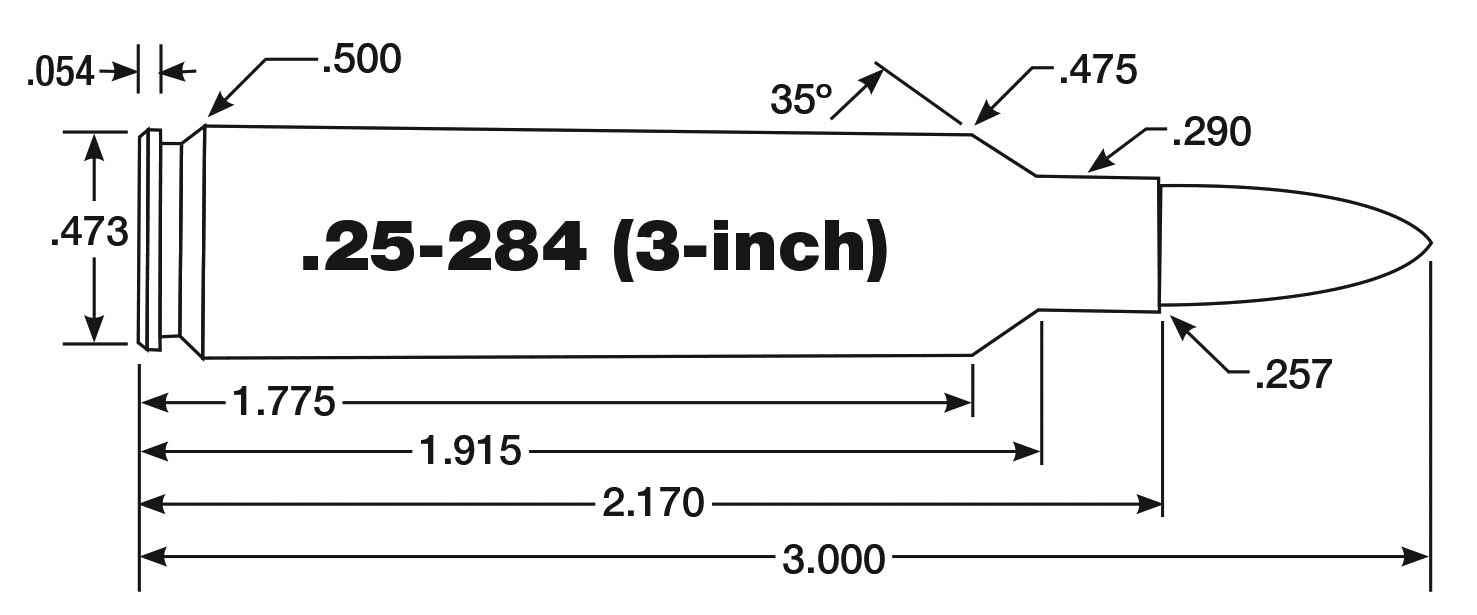
When the dust settled, the 6mm-284 emerged as the most successful with the .25-284 in a close second place. Down the road apiece I will take a close look at the 6mm-284, but chose to go with the .25-284 first
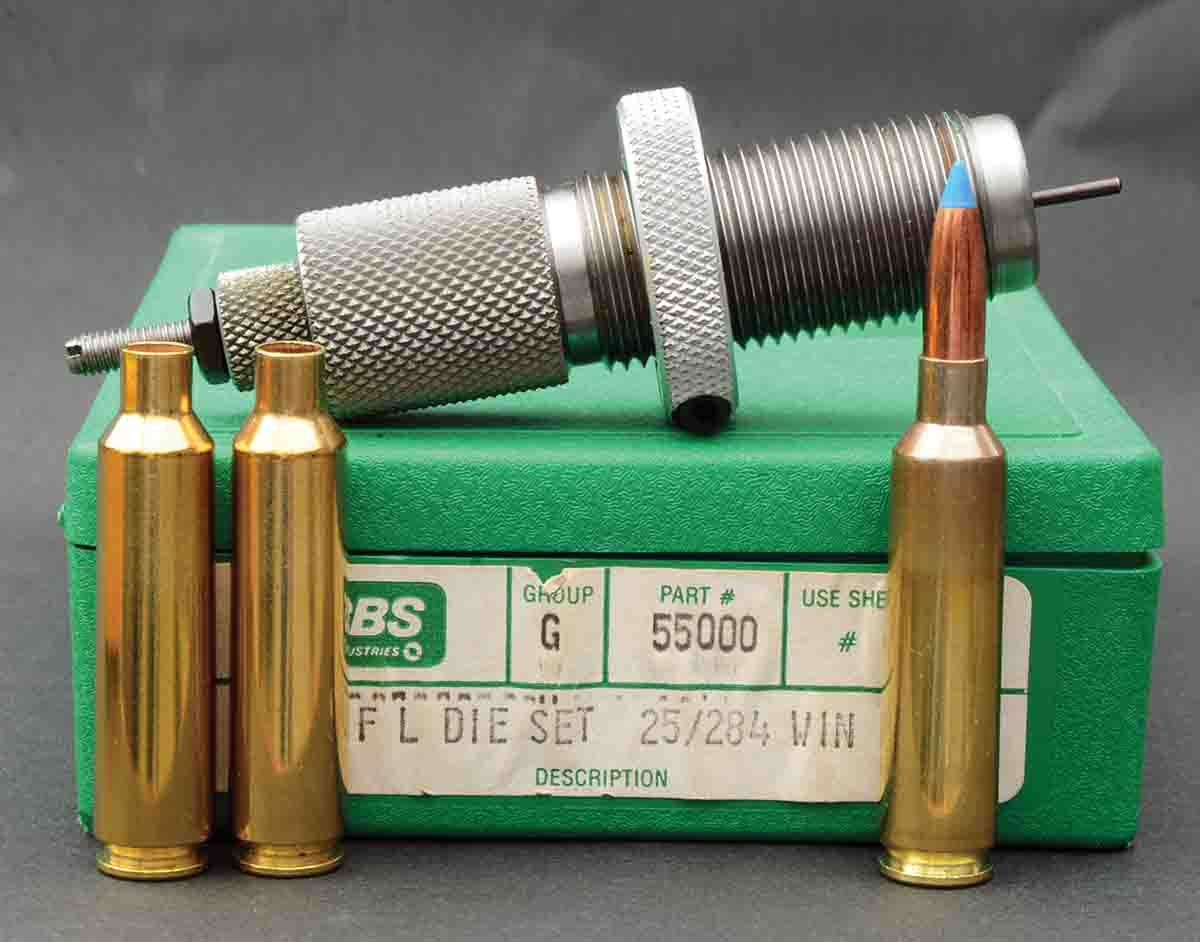
The .25-284 became popular enough to prompt Hodgdon to begin publishing pressure-tested loads during the 1960s. In those days, data for it and the .25-06 were shot in 26-inch barrels. Some maximum powder charges listed for various bullet weights in the .25-284 were a pinch or two lighter than those for the .25-06; consequently, velocities for the .25-284 were a bit slower. This was due to Hodgdon holding cartridge overall loaded length for the .25-284 inside 2.800 inches which was the SAAMI maximum for the .284 Winchester. Deep-seating the heavier bullets displaced quite a bit of space inside the case which could have been used for more powder had bullets been seated farther out.
Capacities of the .25-284 and .25-06 cases are close to the same. Sometime after .284 Winchester brass became difficult to find, I switched to 6.5-284 cases necked down. Filled to their brims with water, those formed from Hornady and Lapua 6.5-284 brass average 64.2 and 65.5 grains, respectively. Averages for Remington and Federal .25-06 cases are 66.2 and 66.4 grains. Such small differences in powder capacities of cases of those sizes have very little influence on potential velocity. Cartridge neck diameters for necked-down 6.5-284 cases with bullets seated are .2845 inch for Hornady and .2850 inch for Lapua. The chamber neck of my rifle measures .290 inch.
My .25-284 was built by Alpha Arms, founded by Homer Koon during the late 1970s. The company was later purchased by another Texan by the name of Jim Hill. I knew both of them and their rifles. Whereas Homer’s Alpha I rifle was rather plain, those built on basically the same action by Jim were in higher grades. Three models were
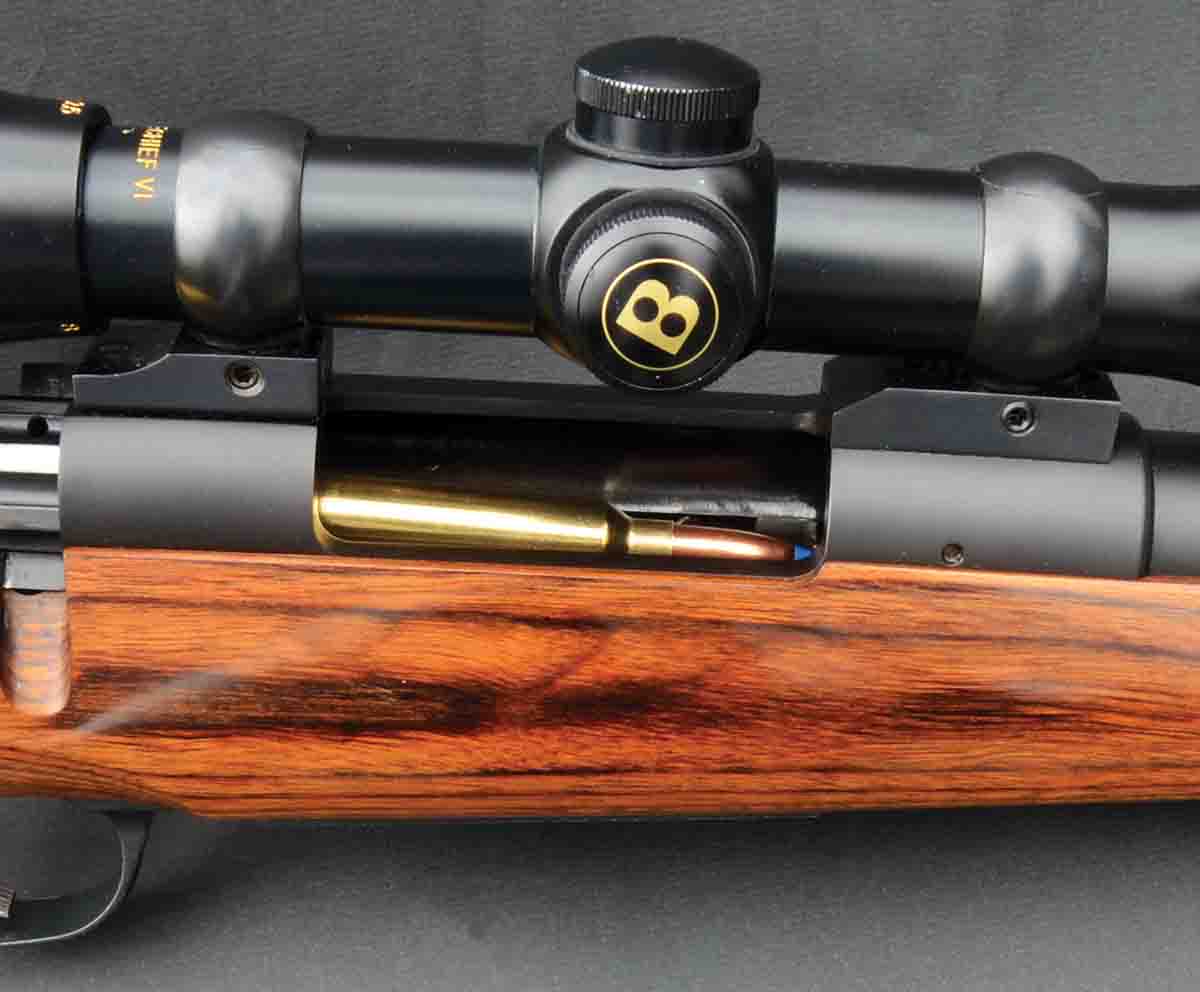
In addition to a number of standard and wildcat chamberings, a customer could choose among other options
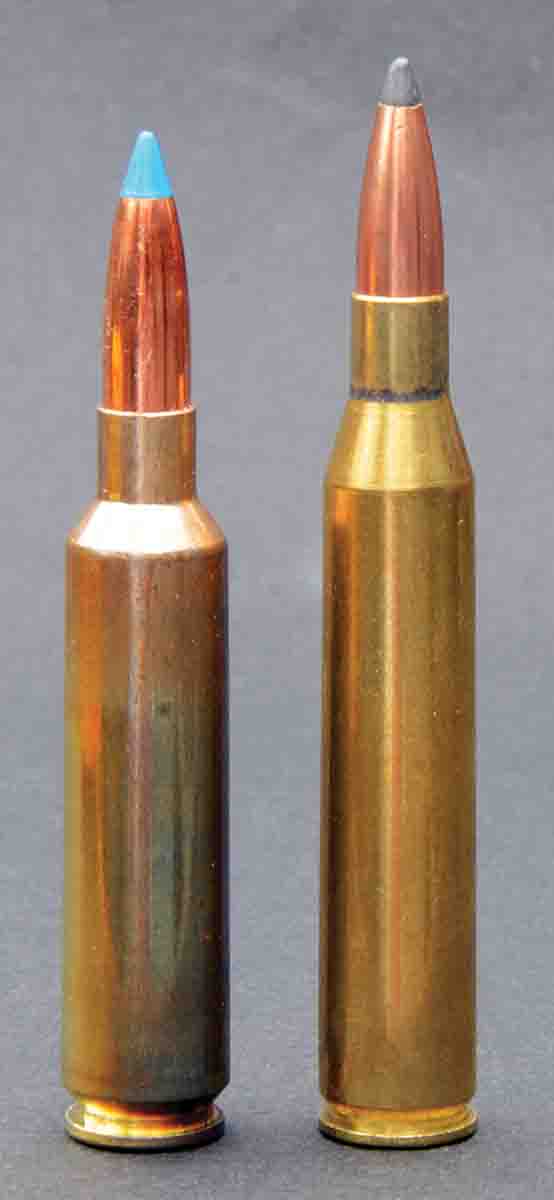
This rifle is on what the folks at Alpha Arms described as a short action, and while it is shorter than the action the company made for .30-06-length cartridges, it is .250-inch longer than the short Remington Model 700 action. Interior length of its magazine is 3.070 inches. The original plan was to use that action not only for the .243 Winchester, .284 Winchester and .308 Winchester, but for several old classics such as the 6.5x55mm Swedish and the 7x57mm Mauser as well. The magazine was made long enough to accommodate them. For trouble-free feeding of cartridges in my rifle, I keep maximum overall length at 3.050 inches.
Many years ago some brave soul decided to increase the chamber throat length of a Winchester Model 70 .257 Roberts so heaver bullets could be seated completely out of the powder cavity of the case. The modification allowed the use of a bit more powder for a slight increase in velocity at acceptable chamber pressures. The “three-inch .257 Roberts,” as it came to be commonly called, was quite a sensation in its day. Many rifles were chambered or rechambered for it, and quite a few magazine articles were written about it.
My Alpha Arms rifle will accept cartridges 3 inches long, so to differentiate it from the original short-action .25-284 wildcat, I prefer to describe it as the .25-284 (3-inch). Due to the lengthy magazine in my rifle along with a fairly long chamber throat, bullets can be seated with no more intrusion on the powder cavity of the case than in some .25-06 rifles. In fact, the short chamber throat in my Remington 700 .25-06 requires 120-grain bullets to be seated a bit more deeply into the powder space than in my .25-284.

Powders that are suitable for the .25-06 work equally well in the .25-284. I don’t shoot many varmint-weight bullets in this cartridge, but the three 4350s along with H-414 and W-760 are worthy of a try with them. Good old H-4831 is still, after all these years, the powder to beat with all bullet weights. IMR-4955 has a similar burn rate and might work as well, but I have not tried it in this cartridge. Reloder 19 is an excellent candidate for 100-grain bullets, and Reloder 22 sits nose-to-nose with H-4831 when burned behind the heavier bullet weights.
A friend who has successfully used an Alpha custom-grade rifle in .25-284 on a variety of game, including Texas whitetails, Utah mule deer, New Mexico pronghorn and Dall’s sheep and caribou in Alaska, prefers Reloder 22 and the Nosler 110-grain AccuBond in necked-down Nosler 6.5-284 cases. His rifle has a 24-inch barrel, and velocity with that bullet is just over 3,100 fps. Most of the game I have taken with my rifle fell to Swift 100- and 120-grain A-Frame bullets, both pushed along by H-4831.
When adding the Alpha Arms rifle to my battery 35 years ago, I rounded up an RCBS .25-284 die set. The rifle and dies are still going strong.



